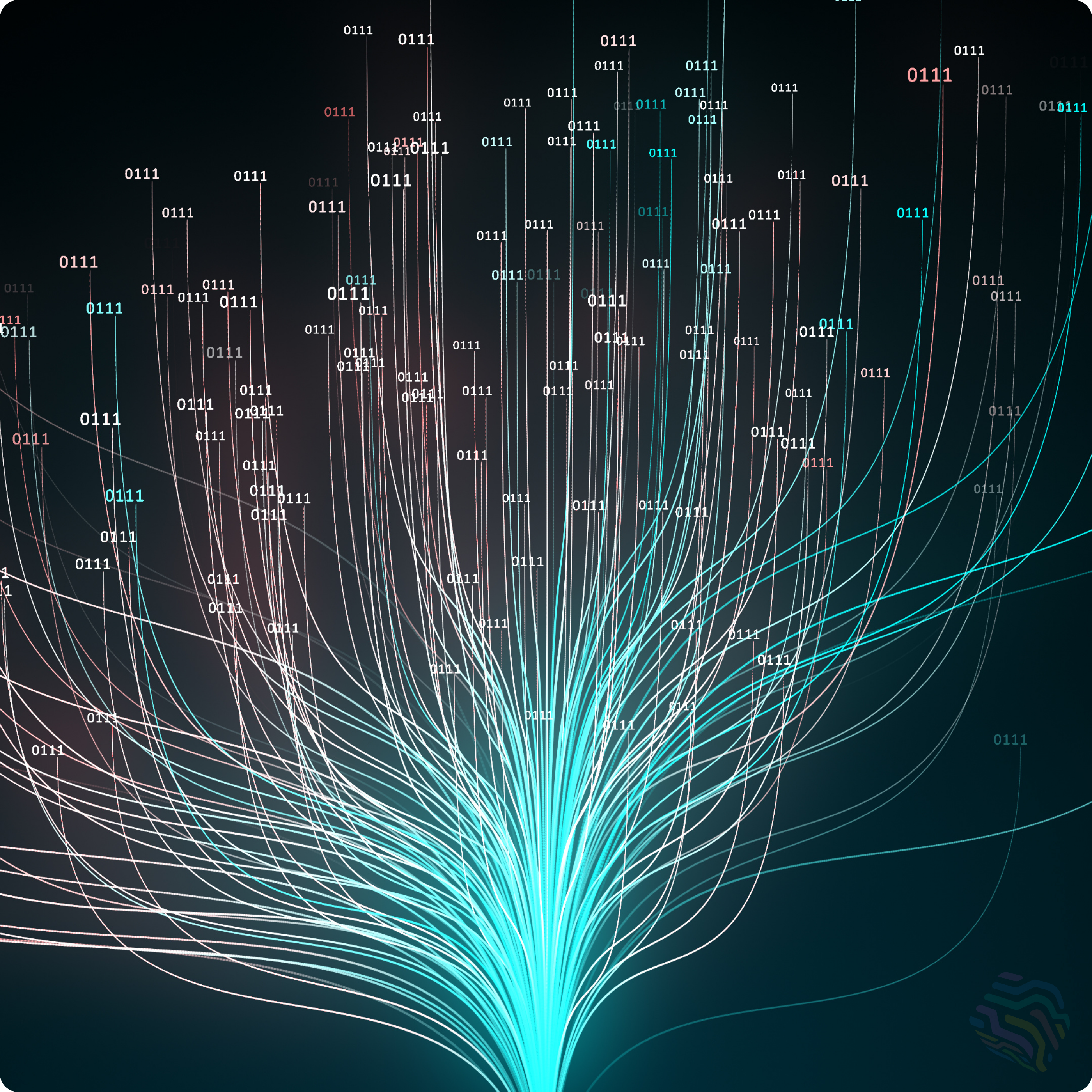
What is the
BigFile
BigFile (BIG) is an open and secure AI-powered blockchain network capable of hosting programs, files, data, and Big Data in the form of smart contracts. It securely performs computations on smart contracts and offers infinite scalability.
Web3 services and enterprise systems can be built directly on BigFile—a public, decentralized network that scales.
Host social networks, media streaming platforms, and more that support Web3 functionality, are tamperproof, and can trustlessly interact with the outside world.
Tamperproof
Cube software is tamperproof, does not require firewall protection, and cannot be infected with ransomware. Because BigFile is built on advanced mathematics, it has no backdoors.
Autonomous
A Cube can be made unmodifiable, establishing permanent logic on the network, or placed under the control of autonomous governance—empowering communities to run Web3 applications or securing an enterprise.
Simple
Global spending on IT personnel now exceeds $1.8 trillion. Cube software significantly simplifies the development and maintenance of online systems and services, leading to cost savings and faster time to market.
Sovereign
If your enterprise, government, or Web3 service relies on centralized traditional IT, there are kill switches and backdoors that compromise your true sovereignty. Instead, build on a decentralized network.
Web3 + BIG
Smart contracts support more advanced tokenization models, driving the evolution of Web3.
ErisAI
BigFile is currently adding support for Web3 and Web2 "AI Models." AI will run on the network, supporting native Web3 integrations, smart contract creation processes, bureaucratic operations, and trustless combinations of models and data.
How is the BigFile created through a specific protocol?
Node providers
Standardized hardware devices called node machines are operated by independent parties known as node providers, who are located in various data centers, geographies, and jurisdictions around the world. These node providers run their hardware to earn tokenized rewards, similar to how independent ISPs and backbone providers operate routing devices to earn peering fees.


Subnet blockchains
The BigFile combines node machines into highly efficient subnet blockchains, which enhance the capacity for hosting tamperproof smart contracts. BigFile also features a permissionless automated governance system called the Network Nervous System, which directs nodes to join or leave subnets.
Cube smart contracts
Smart contracts are a new form of software that runs on blockchain networks. They are tamperproof, unstoppable, optionally autonomous, can process tokens, and are easily composable. Cubes are a high-performance form of smart contracts that can be used to build almost anything. They interact with HTTP to deliver user experiences, can integrate with Web2, and can natively interact with external blockchains. Because they scale, a social network or complex enterprise system can run directly from the network, simplifying development and paving the way for a future without firewalls and trust. They offer a compelling alternative to building on centralized traditional IT.

BIG ID
BIG ID allows users to quickly and securely authenticate to online systems and services using their devices, such as a laptop fingerprint sensor or FaceID on their phone. Behind the scenes, the framework leverages TPM chips within modern hardware to securely manage keys and signing, the WebAuthn protocol to connect code inside the web browser to these TPMs, and advanced chain-key cryptography running on the BIG network.
Wallet on BIG

Decentralized Services and Voting System
Decentralized Services and Voting Systems are services that operate autonomously under the exclusive control of a decentralized governance system called a Service Nervous System (SPS), an evolution of DAO technology. This enables a Web3 service to be transparently managed by a community of thousands, allowing services to "founderize" users by granting them governance tokens, for example, for creating viral content, thereby inverting the traditional Big Tech model. Enterprises can leverage the same technology to distribute control over system updates and configurations, significantly enhancing security.
User-run Web3Sovereign infrastructure
When the systems and services that power society are built on centralized traditional IT infrastructure—such as cloud services, closed-source software, and security hardware—they inherently include backdoors for spying and kill switches. With no alternatives, governments have been forced to surrender sovereignty over the digital foundations that society relies on. Now, BigFile is introducing specialized localized sovereign subnets designed for governments, NGOs, and enterprises with unique needs: an unstoppable, secure, and transparent sovereign platform infrastructure.
IT beyond cloud

Reverse gas model
Unlike most EVM-compatible blockchains, BigFile uses a reverse gas model. This allows end users to interact with smart contracts without needing to set up a wallet or hold tokens—a standard web browser is all they need. Developers charge their smart contracts with "cycles," the gas on BigFile, which are then burned to pay for computation and memory usage. This model simplifies user entry into Web3 and gives developers the flexibility to create custom tokenomics models that align with mass adoption strategies.
Gas-free Web3Native multi-chain
Cube smart contracts on the BigFile are the glue between the world’s most important blockchains. BigFile Bitcoin Network, and native ETH integration is underway. Inter-chain communication and innovations such as chain-key ECDSA allow Cube smart contracts to directly hold, receive and send BTC and ETH seamlessly across chains, creating a trustless multi-chain environment that allows end users to transfer crypto assets at the speed of a chat message without bridges or third-party intermediaries.

